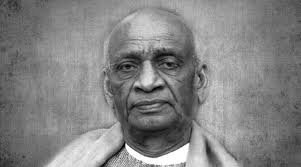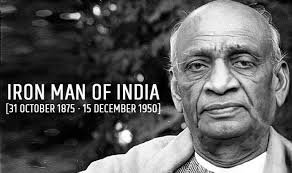Remembering Sardar Patel on His Death Anniversary
Introduction: The Legacy of Sardar Patel
Sardar Vallabhbhai Patel, a key figure in the history of India’s independence movement, is remembered every year on his death anniversary, which falls on December 15. Known as the “Iron Man of India,” Patel’s contributions to the integration of India post-independence are unparalleled. His efforts in uniting over 500 princely states into the newly formed Indian Union played a critical role in establishing India as a unified nation. Patel’s legacy continues to inspire generations, especially on his death anniversary, with events and tributes held across the country.
The Role of Sardar Patel in India’s Integration
After India gained independence in 1947, one of the greatest challenges faced by the country was the integration of numerous princely states that were reluctant to join the Indian Union. Sardar Patel, as the Home Minister of India, took charge of this monumental task. His negotiation skills, firm determination, and strategic diplomacy were crucial in bringing together these states. Through his efforts, states like Hyderabad, Junagadh, and Jammu & Kashmir were integrated into India, a significant achievement that ensured the country’s territorial integrity.
Tributes and Commemorations on His Death Anniversary
On December 15, 2024, several events were organized across India to honor the memory of Sardar Patel. The Prime Minister of India, in particular, paid tribute to Patel at the Statue of Unity in Gujarat, the world’s tallest statue, which was erected to celebrate his contribution to the unity of India. Various schools, government institutions, and organizations also organized programs to reflect on Patel’s ideals of patriotism, unity, and nation-building. These events aim to educate the younger generation about the significance of Patel’s role in India’s independence and post-independence development.

Why This News is Important
1. The Significance of Sardar Patel’s Contributions
Sardar Patel’s role in the integration of India cannot be overstated. As the first Deputy Prime Minister and Home Minister of India, Patel’s leadership ensured that the newly independent nation remained united. His diplomatic skills were instrumental in negotiating with the princely states, ensuring their accession to India. Without his efforts, the Indian Union might have been fractured, leading to prolonged instability in the country. Therefore, recognizing Patel’s contributions is essential for understanding India’s post-independence history and development.
2. National Unity and Integration
Sardar Patel’s death anniversary reminds the citizens of India about the importance of national unity. His vision for a unified India transcended political, linguistic, and cultural divisions, and his methods of negotiation and conflict resolution continue to be relevant today. On his death anniversary, people reflect on the need for continued efforts toward strengthening national integration, particularly in a diverse and vast country like India. His message of unity is particularly significant in today’s context, where regional and social tensions often threaten the country’s cohesiveness.
Historical Context
Sardar Patel’s Role in India’s Freedom Struggle
Before becoming the architect of India’s integration, Sardar Patel was deeply involved in the Indian independence movement. He played a key role in the non-violent struggle for independence under the leadership of Mahatma Gandhi. Known for his organizational abilities, Patel successfully led the Bardoli Satyagraha in 1928, where he emerged as a prominent leader and earned the title “Sardar,” meaning leader. His leadership in various other movements, including the Salt March and Quit India Movement, solidified his position as one of the foremost leaders of India’s struggle for freedom.
Integration of Princely States
Post-independence, Sardar Patel faced the critical challenge of integrating over 500 princely states that had been given the option to either join India, Pakistan, or remain independent. Patel’s efforts, particularly through the use of diplomatic persuasion, military action when necessary, and political maneuvering, successfully brought all the states under the Indian Union. This monumental task cemented his place in Indian history as one of the key architects of modern India.
Key Takeaways from “Remembering Sardar Patel on His Death Anniversary”
| Serial No. | Key Takeaway |
|---|---|
| 1 | Sardar Patel is remembered as the “Iron Man of India” for his role in the integration of princely states. |
| 2 | His diplomatic skills were essential in ensuring the unity of India post-independence. |
| 3 | The Statue of Unity, dedicated to Sardar Patel, stands as a symbol of India’s unity. |
| 4 | Patel’s death anniversary on December 15 is a day of tributes and reflections on his contributions. |
| 5 | His vision for a united India continues to inspire citizens and leaders across the nation. |
Important FAQs for Students from this News
1. Who was Sardar Patel and why is he called the “Iron Man of India”?
Sardar Vallabhbhai Patel was the first Deputy Prime Minister and Home Minister of India. He is called the “Iron Man of India” due to his strong leadership in integrating the princely states into India after independence, ensuring the nation’s unity.
2. What was Sardar Patel’s role in the integration of India?
Sardar Patel played a crucial role in the integration of over 500 princely states into India after independence in 1947. His diplomatic skills and firm resolve were instrumental in ensuring that these states acceded to the Indian Union.
3. When is Sardar Patel’s death anniversary observed, and why is it significant?
Sardar Patel’s death anniversary is observed on December 15 each year. It is significant because it marks the day when the nation remembers his extraordinary contribution to the unity and integration of India.
4. What is the Statue of Unity and why is it important?
The Statue of Unity is the world’s tallest statue, dedicated to Sardar Patel. Located in Gujarat, it symbolizes his efforts to unite India and stands as a tribute to his legacy of national integration.
5. How are people across India commemorating Sardar Patel on his death anniversary?
People across India pay tribute to Sardar Patel through various events and programs, especially at the Statue of Unity in Gujarat. Educational institutions, government organizations, and political leaders also observe the day by reflecting on Patel’s contributions to the unity of India.
Some Important Current Affairs Links


















